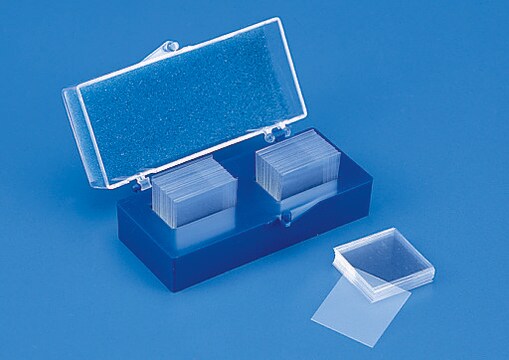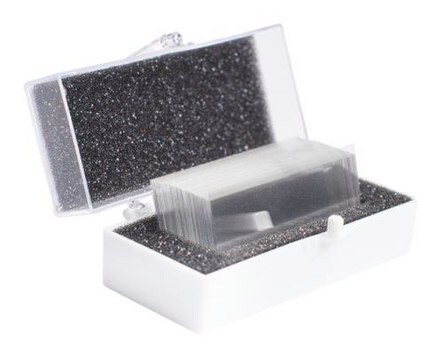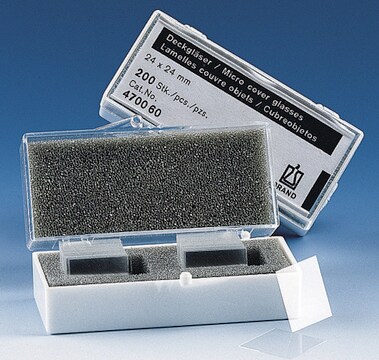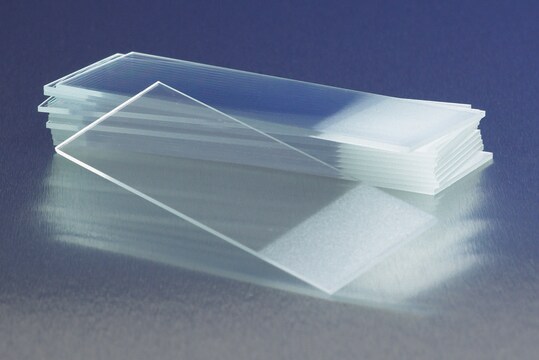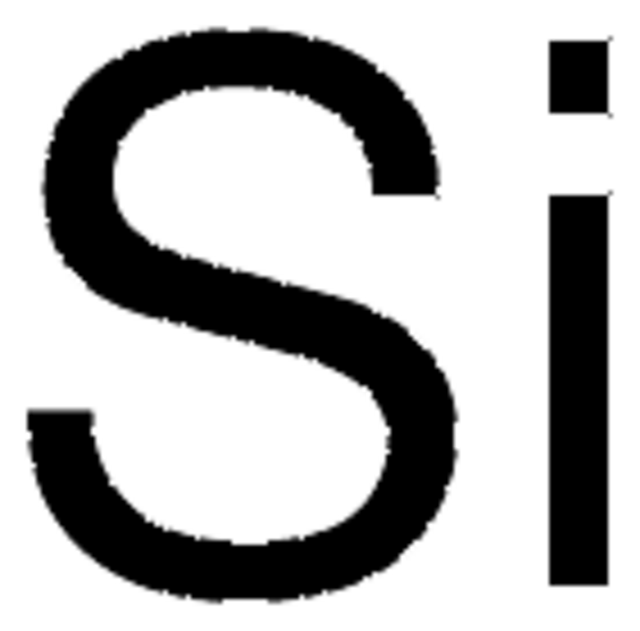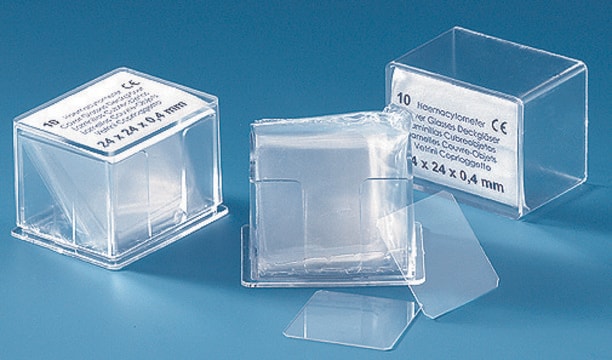643254
Gold coated glass cover slip
L × W × thickness 22 mm × 22 mm × 130-170 μm, square, layer thickness 100 Å, 99.999% (Au)
About This Item
Prodotti consigliati
Livello qualitativo
Saggio
99.99% (Ti)
99.999% (Au)
Lungh. × largh. × spess.
22 mm × 22 mm × 130-170 μm, square
Spessore strato
100 Å
Indice di rifrazione
n20/587 1.523
Gruppi immobilizzati alla matrice
Titanium, as adhesion layer used to bind the gold to the borosilicate glass cover slip
Stringa SMILE
[Au]
InChI
1S/Au
PCHJSUWPFVWCPO-UHFFFAOYSA-N
Cerchi prodotti simili? Visita Guida al confronto tra prodotti
Categorie correlate
Caratteristiche e vantaggi
Altre note
Note legali
Codice della classe di stoccaggio
13 - Non Combustible Solids
Classe di pericolosità dell'acqua (WGK)
nwg
Punto d’infiammabilità (°F)
Not applicable
Punto d’infiammabilità (°C)
Not applicable
Scegli una delle versioni più recenti:
Possiedi già questo prodotto?
I documenti relativi ai prodotti acquistati recentemente sono disponibili nell’Archivio dei documenti.
I clienti hanno visto anche
Articoli
1-Adamantanethiol (1-AD), an example in this spectrum of molecules with distinct chemical and physical properties, forms self-assembled monolayers (SAMs) on Au{111} that are displaceable when exposed to other thiolated molecules from solution, vapor, or contact due to weak intermolecular interactions in 1-AD SAMs.
Global Trade Item Number
| SKU | GTIN |
|---|---|
| 643254-12EA | 4061833314814 |
| 643254-24EA |
Il team dei nostri ricercatori vanta grande esperienza in tutte le aree della ricerca quali Life Science, scienza dei materiali, sintesi chimica, cromatografia, discipline analitiche, ecc..
Contatta l'Assistenza Tecnica.
